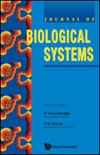人员流动对登革热流行传播预测时空模型的影响
IF 1.5
4区 数学
Q3 BIOLOGY
引用次数: 1
摘要
在本文中,我们提出了一个与登革热传播有关的新的动力系统模型,并研究了其结果形态。我们提出并研究了登革热传播数学模型的各种分支,该模型封装在由反应-扩散方程组成的时空微分系统中。通过使用受感染蚊子和受感染人类的特定推导,将扩散项纳入所述模型。此外,最近邻居感染的机制被整合到模型中。此外,利用自适应多重网格有限差分解耦和拟线性化技术,研究了登革热空间传播的两个主要因素。我们确定了温度变化的影响,以及传染源的流动性,无论是蚊子还是人类。最后,获得了所提出的基于模型的分析数字结果,并以图形轮廓呈现,显示了气候温度和感染者的流动性对疾病传播和速度的主要作用。然后提出、讨论并验证由此提出的模型结果和基于健康的后果。本文章由计算机程序翻译,如有差异,请以英文原文为准。
EFFECT OF HUMAN MOBILITY ON PREDICTIVE SPATIO-TEMPORAL MODEL OF DENGUE EPIDEMIC TRANSMISSION
In this paper, we propose a new dynamical system model pertaining to Dengue transmission, and investigate its consequent morphology. We present and study various ramifications of our mathematical model for Dengue spread, encapsulated in a spatio-temporal differential system made of reaction–diffusion equations. Diffusion terms are incorporated into the said model by using specific derivations for infected mosquitoes, and infected humans, as well. Moreover, mechanisms for the nearest neighbor(s) infections are integrated into the model. Furthermore, using adaptive multigrid finite difference with decoupling and quasi-linearization techniques, we investigate two main factors for Dengue spatial propagation. We determine the effects of temperature variations, and the mobility of infectious agents, be they mosquitoes or humans. Finally, the proposed model-based analytico-numerical results are obtained, and rendered in graphical profiles, which show the major role the climate temperature and the mobility of infected humans have on the spread and speed of the disease. The consequent proposed model outcomes and health-based ramifications are then raised, discussed, and then validated.
求助全文
通过发布文献求助,成功后即可免费获取论文全文。
去求助
来源期刊
CiteScore
2.80
自引率
12.50%
发文量
31
审稿时长
1 months
期刊介绍:
The Journal of Biological Systems is published quarterly. The goal of the Journal is to promote interdisciplinary approaches in Biology and in Medicine, and the study of biological situations with a variety of tools, including mathematical and general systems methods. The Journal solicits original research papers and survey articles in areas that include (but are not limited to):
Complex systems studies; isomorphies; nonlinear dynamics; entropy; mathematical tools and systems theories with applications in Biology and Medicine.
Interdisciplinary approaches in Biology and Medicine; transfer of methods from one discipline to another; integration of biological levels, from atomic to molecular, macromolecular, cellular, and organic levels; animal biology; plant biology.
Environmental studies; relationships between individuals, populations, communities and ecosystems; bioeconomics, management of renewable resources; hierarchy theory; integration of spatial and time scales.
Evolutionary biology; co-evolutions; genetics and evolution; branching processes and phyllotaxis.
Medical systems; physiology; cardiac modeling; computer models in Medicine; cancer research; epidemiology.
Numerical simulations and computations; numerical study and analysis of biological data.
Epistemology; history of science.
The journal will also publish book reviews.

 求助内容:
求助内容: 应助结果提醒方式:
应助结果提醒方式:


